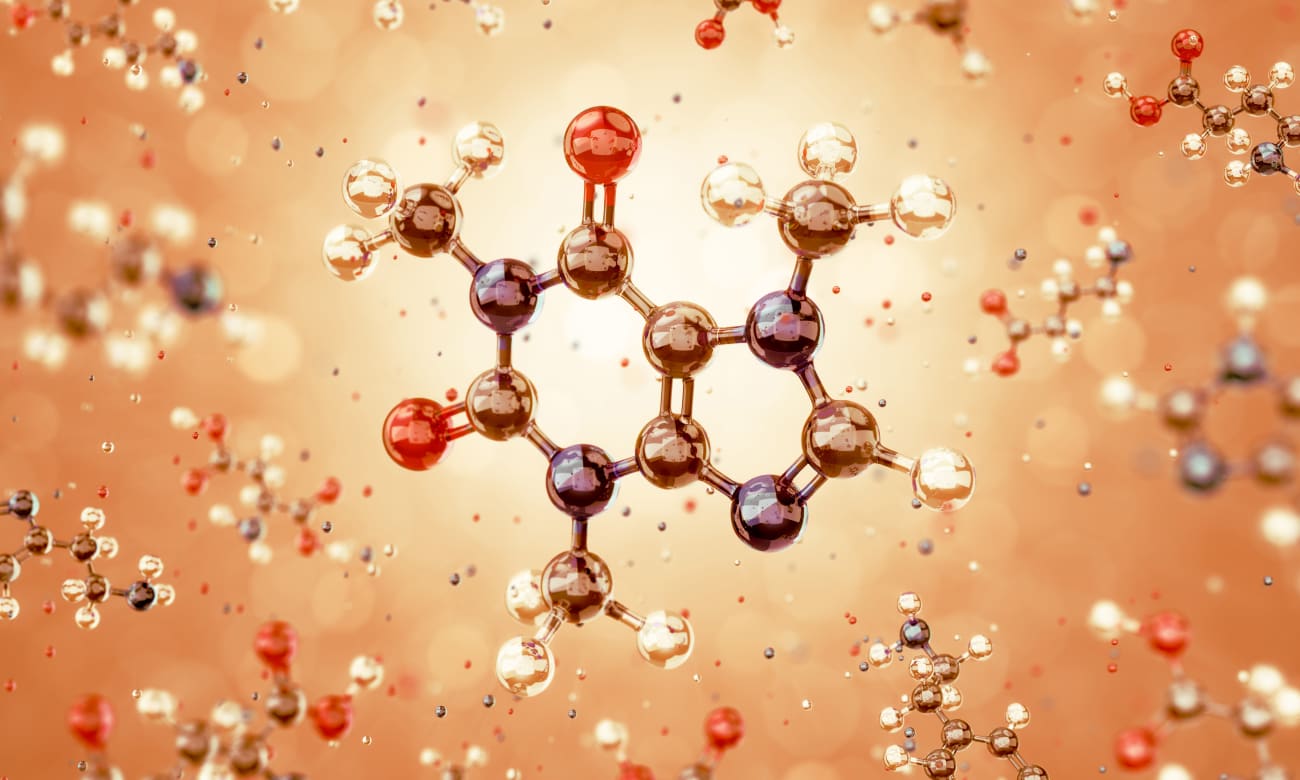
Mary “Maggie” Sweeney wants to make one thing clear: She has no intention of convincing people to give up their coffee or favorite caffeinated beverage. That said, the psychiatry researcher at Johns Hopkins Bayview Medical Center’s Behavioral Pharmacology Research Unit feels compelled to raise awareness about caffeine’s potential to cause distress.
Building on a long-running grant project in collaboration with Roland Griffiths, psychiatry researcher, a recent study on caffeine use disorder revealed responses to questions about caffeine use that Sweeney says were eye-opening and complementary to clinical trials conducted at Johns Hopkins — one in 2016 and one in 2019. The Diagnostic and Statistical Manual of Mental Disorders (DSM-5) recognized caffeine use disorder as “a condition for further study.”
Caffeine use disorder is a problematic pattern of caffeine consumption characterized by a persistent desire to cut down or control use of the substance along with unsuccessful efforts to do so despite problems caused or worsened by caffeine. Significant withdrawal symptoms or use of the drug to relieve or avoid withdrawal are also characteristics of the condition.
–Mary “Maggie” Sweeney, psychiatry researcher at Johns Hopkins Bayview Medical Center
Sweeney, Griffiths and colleagues conducted the online research survey with 1,006 caffeine-consuming adults from across the U.S. Data were collected by an online survey panel aggregator used in other peer-reviewed research studies. The goal was to better understand caffeine use disorder’s prevalence and clinical significance in the general population.
Milligrams of caffeine per serving were calculated using typical milligrams per ounce for brewed/drip coffee (200 mg/12 oz.); brewed tea (40 mg/6 oz.); and soft drinks (40 mg/12 oz.). Total caffeine intake in a typical week from all sources was summed and divided by seven to estimate daily caffeine consumption. To qualify for the study, participants needed to report consuming some caffeine-containing beverage or supplement in a typical week.
The researchers found that 8% of the sample fulfilled DSM-proposed criteria for caffeine use disorder when the structured caffeine use disorder interview questions were adapted to the online survey format.
“What I find fascinating,” says Sweeney, “is how little people think about coffee or other caffeinated drinks as stimulants. Although for many people consumption of caffeine is benign, we learned from our study that there is a small but important subset of caffeine consumers who report that caffeine has interfered with their lives in clinically meaningful ways.”
People who met criteria for caffeine use disorder reported problems such as insomnia, gastrointestinal troubles and anxiety, which were caused by or exacerbated by caffeine. The study also found that participants who met criteria for caffeine use disorder tended to consume more caffeine, and were younger and more likely to be cigarette smokers. A larger sample or sample with greater substance use history may be necessary to detect the association between caffeine use disorder and other substance use.
About 90% of adults in the United States use caffeine regularly, says Griffiths, and their average consumption exceeds 200?milligrams of caffeine per day — more caffeine than is contained in two 6-ounce cups of coffee, or five 12-ounce cans of soft drinks.
This latest research study, notes Sweeney, is the most thorough evaluation to date of the prevalence and clinical significance of caffeine use disorder. These data complement results from their recent clinical trial, which showed that people seeking treatment for caffeine reduction were able to reduce their caffeine consumption and decrease their symptoms following the study intervention.
Share Fast Facts
New Insights into Caffeine Use Disorder. Click to Tweet
“In our clinical trial, our hypothesis was that people who have had trouble cutting back on caffeine on their own may be able to reduce their caffeine consumption with our guidelines to cut back over several weeks,” says Sweeney. “We also thought this could help people reduce their caffeine-related distress, such as withdrawal symptoms or consuming more caffeine than they intended.”
In both the online survey study and clinical trial, it was common for participants who met criteria for caffeine use disorder to report withdrawal symptoms from caffeine that reduced their function. Caffeine withdrawal symptoms can include headache, fatigue and irritability, which tend to peak at 24 to 48 hours after stopping caffeine, but can last for as long as 10 days in some individuals.
Prior research has also revealed that caffeine can result in withdrawal symptoms following cessation of much lower doses than previously thought. A 6-ounce cup of regular coffee delivers 100 milligrams of caffeine. Even this small amount of caffeine can cause withdrawal symptoms in some people when they stop using it regularly. Other studies have shown that caffeine doses as low as 10–20 milligrams are psychoactive.
The researchers acknowledge that caffeine can have positive health effects, such as reducing the risk of type 2 diabetes and boosting some aspects of cognition. “I want to be clear that caffeine isn’t all good or bad,” says Sweeney. “We’re not arguing that everyone needs to cut back on their consumption. A moderate amount of caffeine — up to 400 milligrams/day (about two 12-ounce cups of coffee) — is not generally associated with negative health effects. But, caffeine reduction is a good goal if caffeine causes significant impairment through withdrawal symptoms or by worsening an underlying problem, such as insomnia or anxiety.”



